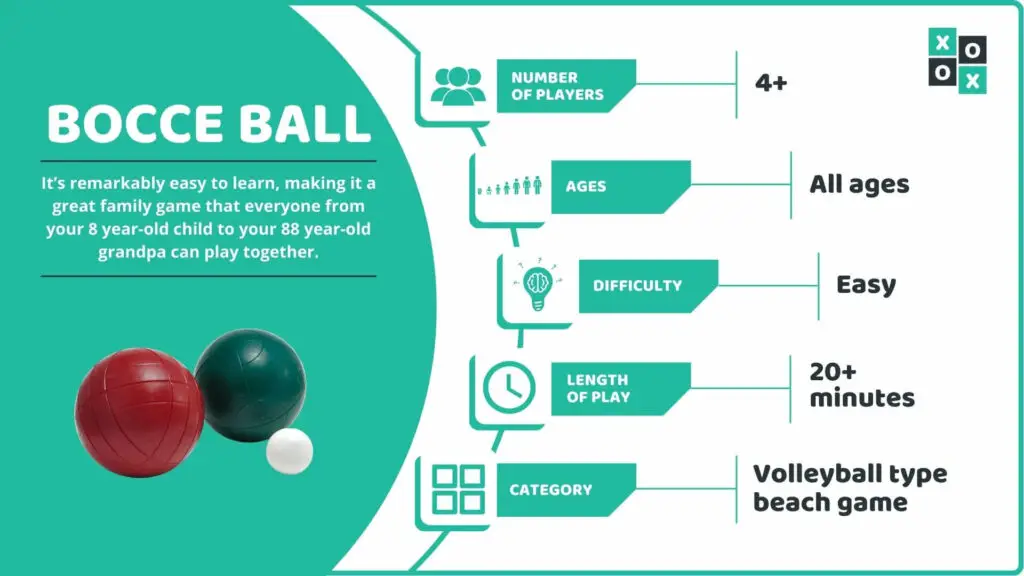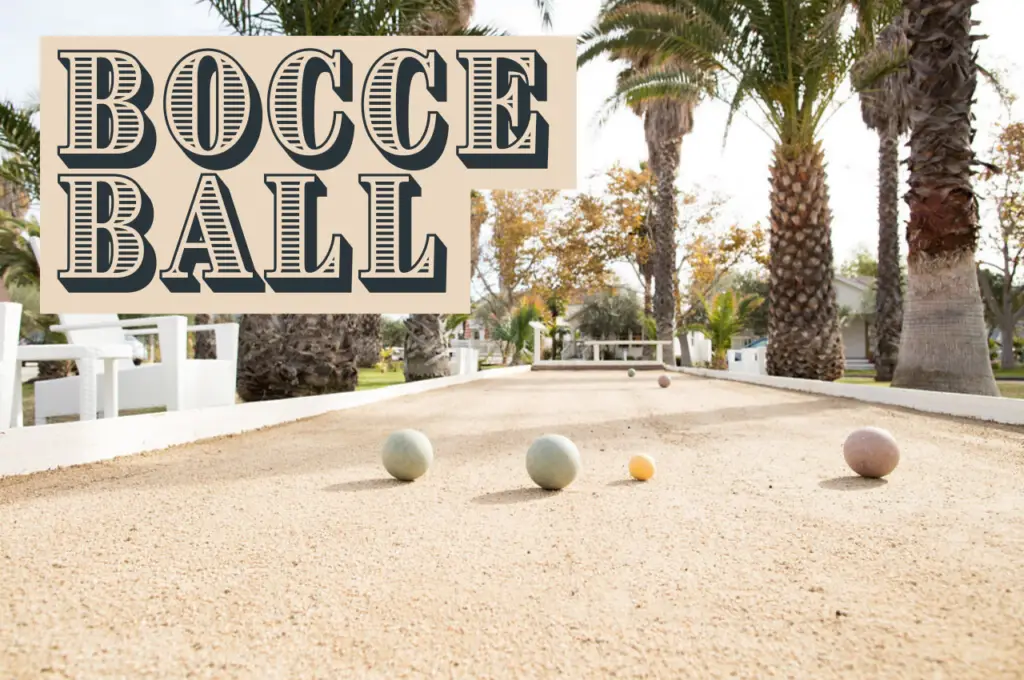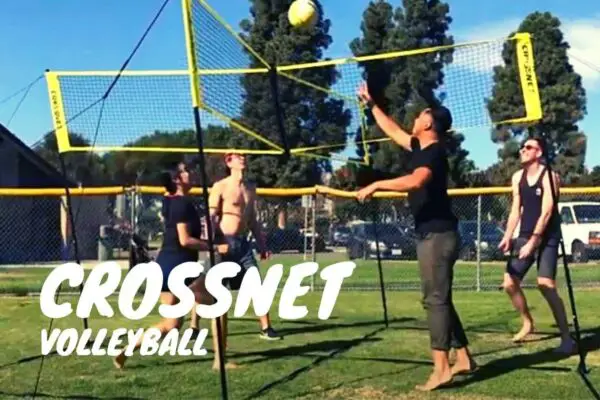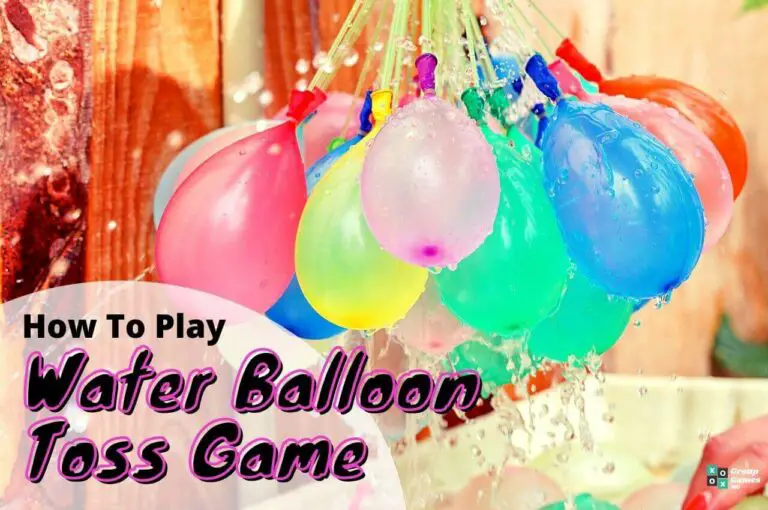Watching a game from the sidelines, Bocce Ball rules can seem somewhat baffling, but as you’ll soon discover in this guide, it’s one of the easiest games in the world to get to grips with, making it an ideal game for playing with kids and grownups of all ages.
Throw a single small ball (known as a Palino or “jack”) and whoever gets their larger balls closest to it wins the frame. Win more frames than your opponents, and victory is yours.
So far, so simple, but how exactly do you get started?
Below, we’ll outline everything you need to start playing bocce ball with your friends and family, including essential equipment, a break down of the rules, and, of course, how to win.
What is Bocce Ball?

Combining the sense of tradition you get with popular pub games like darts with the excitement of other well-loved outdoor games such as fricket, bocce ball can trace its roots all the way back to the days of the Roman Empire yet remains enormously popular around the world even today.
In fact, it’s a little known and often surprising fact that bocce ball is the third most-played sport anywhere in the world, behind only soccer and golf.
Ready to see what all the fuss is about? Here’s everything you need to know about how to play bocce ball:
Number of Players Required: 2-8. If playing with more than 2 people, players should be divided into even-numbered teams.
Who can play it: All ages.
Difficulty: Easy.
Similar To: Kubb
Main Objective: Get your bocce ball closer to the Pallino than your opponents in order to score points. The first player or team to reach a pre-agreed set of points is declared the winner.
Why We Love It: It’s remarkably easy to learn, making it a great family game that everyone from your 8 year-old child to your 88 year-old grandpa can play together.
Playing Bocce Ball: What You’ll Need
One thing we love about this game is that you don’t need a lot of special equipment to start playing, just 8 standard bocce balls and a single Pallino.
Bocce Balls
Bocce balls are the larger balls that you’re likely most familiar with if you’ve ever seen a game in action. Though they do come in all shapes and sizes, standard regulation balls measure 4.2 inches in diameter.
To make life easy, it’s better to have bocce balls in at least two separate colors, one color for each team.
Related: Best Bocce Ball Set
Pallino
Often known as a “jack,” the Pallino is the smaller ball that serves as the target for the whole game. The first player up will throw the Pallino, and from there on in, each player’s goal is to get their bocce ball as close to it as possible.
Although there are no official regulation sizes for Pallinos, most tend to measure 1.97 inches in diameter.
The good news is that almost -if not all- of the quality bocce ball sets out there include both the balls and the Pallino along with handy extras such as a measuring rope.
Don’t have a measuring rope in your set? You might want to grab a tape measure to settle disputes when the game is just too close to call.
Setting Up Your Bocce Ball Game
Unlike other outdoor games that can generally be played in any available space, bocce ball requires you to first set out a playing area with designated boundary lines. This is known as the bocce ball court.
The court is a standard rectangle shape. Official competition rules say it should be 91 feet long by 13 feet wide, though obviously if you’re only playing a casual game with friends, your court can be marked out to fit whatever space you have.
You’ll then need to add three horizontal lines to the inside of your rectangle. One goes directly in the middle (the centerline), while the other two should be placed about ten feet (or an appropriate distance) from either end of your court. These two lines are called your foul lines.
Bocce ball rules state that players can step on -but not over- this foul line when throwing the ball or Palino.
Anything can be used to mark out your bocce ball court, from a ball of string to a line drawn in the sand, or even a decent non-toxic sports field marking paint if you’re playing on private property.
Bocce Ball Rules and Gameplay
With everything set up, each team takes a different end of the court, with a coin toss deciding which team goes first.
The bocce balls are divided equally between each team, with the number of balls thrown per person depending on the number of people in the team. In a 1-on-1 game, for example, each player will have four balls each, a 2 vs. 2 game will give each player 2 balls each and so on.
Throwing the Palino
The game begins with the first player throwing the Palino, making sure that it stays behind the center line. They then throw their first bocce ball, with the goal being to get that ball as close to the Palino as possible.
Bocce Ball Gameplay
Next, the second team will throw their first bocce ball. Whichever team lands closest to the Palino then throws all of their remaining balls.
Finally, the remaining team throws all of their remaining balls.
Although no extra points are rewarded for doing so, bocce ball rules state that it’s perfectly acceptable to directly hit the opposing team’s balls or even the Palino. This often proves an effective strategy for winning in competitive games.
Speaking of winning, the player who has the ball closest to the Palino once all of the balls have been thrown wins that frame and is awarded a point.
Keeping Score in Bocce
Bocce ball is played in frames, with each frame lasting as long as it takes for all 8 balls to be thrown.
A point is awarded to the player who gets his ball closer to the Palino than any other. If that player has multiple balls closer to it than any of his opponent’s he scores a point for each one.
The bocce balls are then collected, the players swap sides and a new frame commences. Whoever didn’t throw the Palino the first time around throws it in the next frame, and that process alternates for all subsequent games.
Play continues until one player reaches an agreed-upon points total. This is usually 12, though it can be different for casual games.
Frequently Asked Questions About Bocce
How Do You Pronounce Bocce?
Bocce is pronounced boh-chee. It sounds a lot like you’re saying “botchy.”
What Happens if The Pallino Goes Out of Bounds?
Official bocce rules state that if the Palino is knocked out of the court or over the center line then the frame ends and is started over. Players swap sides, but whoever threw the Pallino in the canceled frame throws it again in the do-over.
Petanque: A Challenging Alternative to Bocce
So, you’ve got your bocce ball set, you’ve learned all the rules and although you’ve had a great time playing with your family and friends, you prefer your outdoor games to be a little more challenging.
If that’s the case, then allow us to introduce you to Petanque. A similar boules game to bocce, the two do have a lot in common, including the overall objective of getting your balls as close to the Palino as possible.
However, Petanque ups the difficulty factor not only by using smaller balls, but also changing some of the key aspects of the game.
For one thing, Petanque is typically played with over-arm throws rather than under-arm rolls as in bocce. This approach also means that there’s no need for a flat surface. This is typically required in bocce to enable the balls to roll, whereas some Petanque players actually prefer an uneven surface to increase the challenge.
Finally, Petanque doesn’t allow you to hit the Paloni. Do that in this game and you lose, meaning you have to think -and play- more strategically in order to win.








